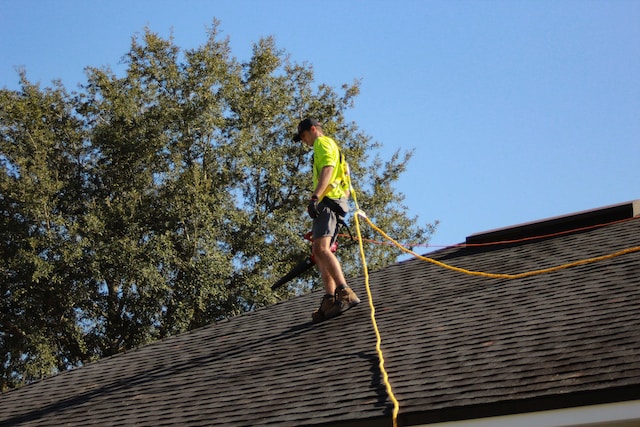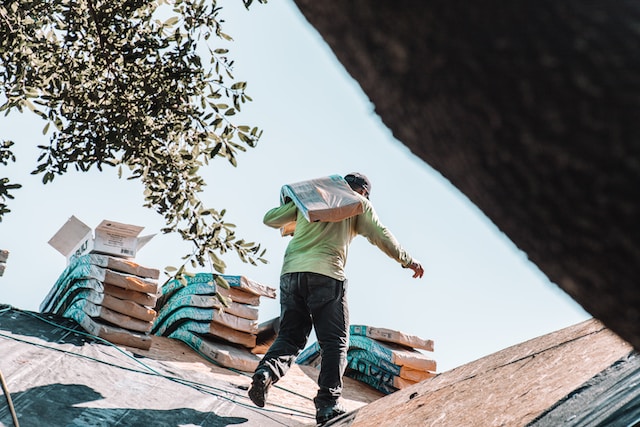A well-maintained roof is an essential component of any structure, providing protection against the elements and ensuring the longevity of the building. Whether you are a homeowner or a business owner, understanding the key aspects of roofing systems can help you make informed decisions about maintenance, repairs, and even upgrades. In this article, we will explore some crucial aspects of roofing systems that every property owner should be aware of to ensure the integrity and longevity of their roofs.
Roofing Materials and Their Lifespan
One of the primary considerations when it comes to roofing systems is the selection of materials. Different roofing materials offer varying levels of durability, aesthetics, and energy efficiency. Asphalt shingles, a popular choice for residential roofs, are cost-effective and come in a variety of styles and colors. However, their lifespan typically ranges from 15 to 30 years, depending on the quality of the shingles and the local climate. On the other hand, metal roofing is known for its exceptional durability, often lasting 50 years or more. It is resistant to harsh weather conditions, including hail and strong winds, making it an ideal choice for areas prone to severe weather.
To make an informed decision about roofing materials, consider factors such as the climate in your region, your budget, and the architectural style of your property. Regular inspections by a professional roofer can help identify signs of wear and tear, allowing for timely repairs or replacements. Understanding the lifespan of your chosen roofing material empowers you to plan and budget for future maintenance, ensuring that your roof remains in optimal condition for years to come.
Importance of Proper Roof Ventilation
Roof ventilation is a critical yet often overlooked aspect of roofing systems. Proper ventilation plays a crucial role in regulating temperature and moisture levels in the attic space, preventing issues such as mold growth, ice dams, and premature deterioration of roofing materials. Inadequate ventilation can lead to a buildup of heat in the attic, causing shingles to blister and reducing their lifespan. Additionally, excess moisture in the attic can result in rot and damage to the underlying structure.
To ensure effective roof ventilation, it is essential to have a balanced system that allows for the free flow of air. This typically involves the installation of intake vents, such as soffit vents, and exhaust vents, such as ridge vents. Proper ventilation not only extends the life of your roofing materials but also contributes to energy efficiency by preventing excessive heat buildup in the summer and minimizing heat loss in the winter.
The Impact of Climate on Roofing Systems
The climate in your geographical location has a significant impact on the performance and lifespan of your roofing system. Different climates present unique challenges, from extreme heat and sunlight to heavy snowfall and ice. For instance, in areas with high temperatures, UV radiation can accelerate the deterioration of roofing materials, leading to cracks, discoloration, and reduced durability. On the other hand, regions with frequent snowfall may experience issues such as ice dams, which can cause water to back up under the shingles, leading to leaks and water damage.
Understanding the specific challenges posed by your local climate allows you to take proactive measures to protect your roof. This may include choosing roofing materials with enhanced resistance to UV radiation or ensuring proper insulation and ventilation to prevent ice dam formation. Regular inspections, especially after extreme weather events, enable you to identify and address potential issues before they escalate, preserving the structural integrity of your roofing system in the face of diverse climatic conditions.
Partnering with Professionals
Choosing the right professionals for your roofing needs is paramount in ensuring the longevity and performance of your roofing system. Consider partnering with a locally operated roofing company that understands the unique challenges posed by the regional climate. Local roofers are often well-acquainted with the specific weather conditions, building codes, and environmental factors that can impact your roof. Their expertise in selecting suitable materials and designing ventilation systems tailored to the local context can make a substantial difference in the resilience of your roof. Additionally, local roofing companies are more accessible for regular inspections and timely repairs, fostering a proactive approach to roof maintenance.

Roofing Maintenance Tips for Homeowners
Maintaining your roofing system is crucial for its longevity and performance. Homeowners can take proactive steps to ensure the health of their roofs by conducting regular visual inspections. Look for signs of damage, such as missing or damaged shingles, sagging areas, or visible leaks. Trim overhanging branches to prevent them from rubbing against the roof during windstorms, and clear debris like leaves and twigs from gutters regularly to avoid water buildup. If you notice any issues, promptly contact a professional roofing contractor for a comprehensive inspection and necessary repairs. Timely maintenance not only prevents minor problems from escalating but also extends the overall lifespan of your roofing system.
Energy-Efficient Roofing Solutions
In an era where energy efficiency is a growing concern, investing in eco-friendly roofing solutions can benefit both the environment and your wallet. Cool roofing materials, such as reflective coatings or light-colored shingles, can significantly reduce the absorption of solar heat, leading to lower energy bills by keeping your home cooler. Additionally, consider incorporating solar panels into your roofing system to harness clean and renewable energy. While the initial investment might be higher, the long-term savings on energy costs and potential tax incentives can make eco-friendly roofing solutions a wise and sustainable choice for environmentally conscious homeowners.
Staying informed about roofing materials, proper ventilation, local climate considerations, and partnering with a locally operated roofing company are essential steps in maintaining a durable and resilient roofing system. Homeowners can further contribute to the health of their roofs by following maintenance tips and exploring energy-efficient solutions. A well-maintained roof not only protects your investment but also enhances the overall comfort and energy efficiency of your home. By taking a proactive and informed approach to roofing, property owners can enjoy the benefits of a sturdy and reliable roofing system for years to come.







